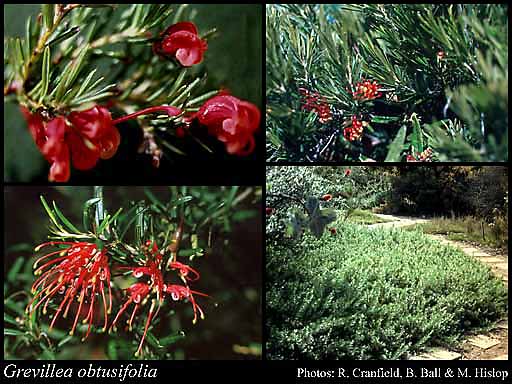- Reference
- A.DC., Prodr. 14:356 (1856)
- Conservation Code
- Not threatened
- Naturalised Status
- Native to Western Australia
- Name Status
- Current
Widely spreading or prostrate, dense shrub, 0.2-2 m high, up to 4 m wide. Fl. red/red-pink, Apr or Aug to Nov. Sand, often damp, sandy clay. Alongside rivers.

Scientific Description
Shrubs, 0.5-1.5 m high; branchlets hairy, not glaucous. Leaves alternate, 10-35 mm long, 2-3 mm wide, hairy, on the abaxial surface, the hairs straight; lamina flat, widest around the middle or more or less the same width throughout, entire, the margins flat or recurved. Inflorescences terminal, red or pink; pedicels 5-7 mm long. Perianth 7-11 mm long; tepals some joined and some free after flower opens, glabrous; ovary glabrous, stipitate, the stipe 2-3 mm long; pistil 20-25 mm long, red or pink, pollen presenter oblique, style glabrous. Follicles glabrous, not viscid, dehiscent, 12-13 mm long. Flowers in August, September, October or November. Occurs in the South-west (SW) Botanical Province(s), in the Swan Coastal Plain (SWA) or Jarrah Forest (JF) IBRA subregion(s).
Distribution
- IBRA Regions
- Jarrah Forest, Swan Coastal Plain.
- IBRA Subregions
- Northern Jarrah Forest, Perth.
- Local Government Areas (LGAs)
- Armadale, Chittering, Gingin, Murray, Perth, Swan, Wanneroo.